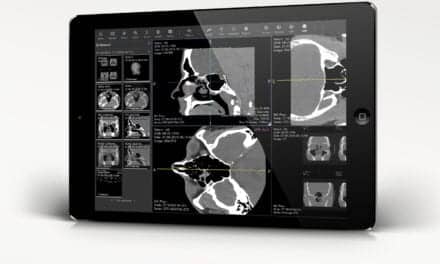Picture archiving and communications system (PACS) technology was introduced in the early 1980s, but it did not achieve widespread commercial acceptance until the mid 1990s. Today, there are an estimated 1,200 to 1,500 PACS installations in the United States that are 2 or more years old. The number of older PACS that remain in operation will continue to increase for the next 5 to 10 years because there are significant hurdles to be overcome in upgrading and replacing PACS.
During the surge in PACS adoption between 1995 and 2002, processing, storage, and communications technology evolved, bringing down the costs of archives, networks, workstations, and interfaces. These are the primary components of a PACS, and their technical evolution has enabled modern PACS to become more user friendly while enhancing system performance, speed of image delivery, reliability, and productivity. The results have been improved outcomes and a significant decrease in the total cost of ownership for PACS. Combined with the establishment and evolution of Digital Imaging and Communications in Medicine (DICOM) and Health Level 7 standards and the introduction of the 11 Integrating the Healthcare Enterprise integration profiles, these rapid changes in technology have left the majority of PACS installations outdated and in need of an upgrade (or migration to more modern technology).
In addition, few of these early PACS installations attained the promise or goals on which the PACS business case or purchase decision was initially based. Film and labor costs were not substantially reduced in some cases, and many of the productivity gains that had been projected went unrealized because of interface, work-flow, and reliability issues. Some radiology departments significantly increased their costs instead of reducing them because they went from supporting one system to supporting two parallel systems: the electronic PACS and the manual, film-based system which was supposed to have been replaced.
Now, many of the facilities that have older PACS are considering replacing or upgrading their systems to achieve the benefits originally promised and to take advantage of more robust modern technologies. They may also wish to reap the security enhancements of newer PACS in order to address the requirements of the Health Insurance Portability and Accountability Act. Migrating to new technology, however, has presented another set of issues and problems; in some cases, these difficulties apply even to newer versions of the original vendor’s PACS.
Some of the most difficult problems encountered in PACS migration involve workstations, archives, media migration, database migration, proprietary compression, radiology information system interfaces, and the addition of new DICOM services such as Modality Worklist and Modality Performed Procedure Step. Moving to another vendor’s PACS frequently involves complex archive and database conversions that may or may not be technically/financially feasible. This results in a potential tradeoff that may include starting over with a new archive, as many upgrading institutions have done. In addition, almost all PACS that are more than 1 or 2 years old use the complex, rules-based study-distribution paradigm, rather than the contemporary on-demand paradigm. Upgrading a PACS may also require upgrading the infrastructure from shared Ethernet to switched Ethernet that is now needed.
In many respects, upgrading or migrating from an existing PACS is as complicated and time consuming as implementing an organization’s first PACS. This initiative takes a significant amount of effort and expertise in multiple areas (including a knowledge of networks, archives, data migration, work-flow assessment, display systems, interfaces, project management, finance, clinical assessment, and education). It requires assessment, planning, budgeting, specifying, and contracting, as well as setting performance and acceptance criteria. This holds true even if an institution continues to use its current PACS vendor.
The bottom line is that once an organization starts a PACS program, there is no turning back. As any technology would, a PACS requires ongoing investment, quality control, support, and assessment. The PACS committee that oversees the initial system implementation should, therefore, remain active. It will need to maintain a working relationship with the facility’s information technology group for archive, network, and interface support; to seek continuing input from hospital staff, from technologists to the executive board; and to build a relationship with PACS vendors.
An experienced consultant can help the enterprise leverage its initial investment and minimize the hazards of technology obsolescence. The organization, it is hoped, will have learned from its first experience with PACS the importance of detailed functionality and performance specifications that become the basis of the acceptance test and a critical part of the vendor contract. With these vital tools in place, an upgrade, migration, and/or new PACS implementation will have a greater potential for success, leading to the full utilization of new PACS functionality, to a true return on investment, and to improved patient care and referring-physician acceptance.
Gary Reed is president, Integration Resources Inc, Lebanon, NJ.
Edward M. Smith, ScD, is professor of radiology, University of Rochester School of Medicine, Rochester, NY, and a provider of consulting services to Integration Resources, Inc.




